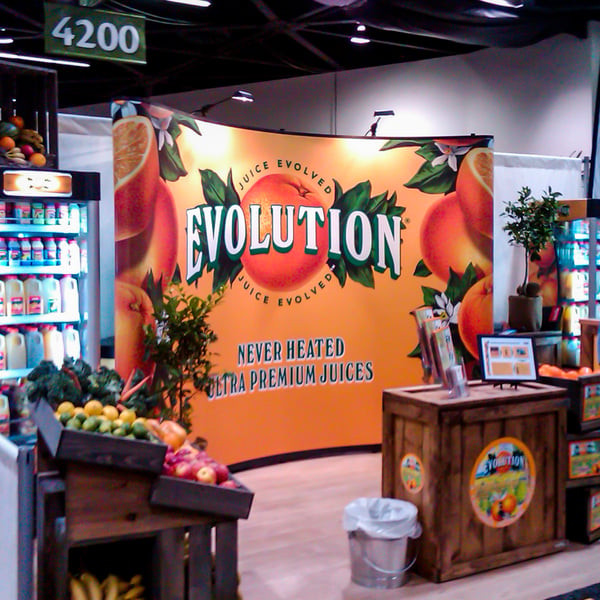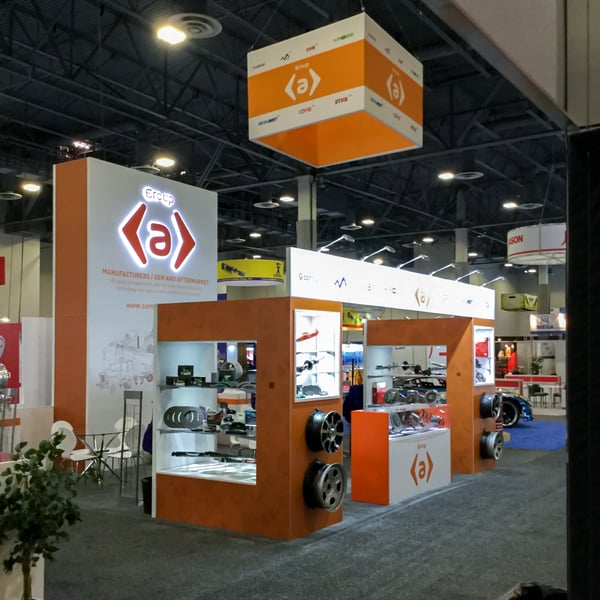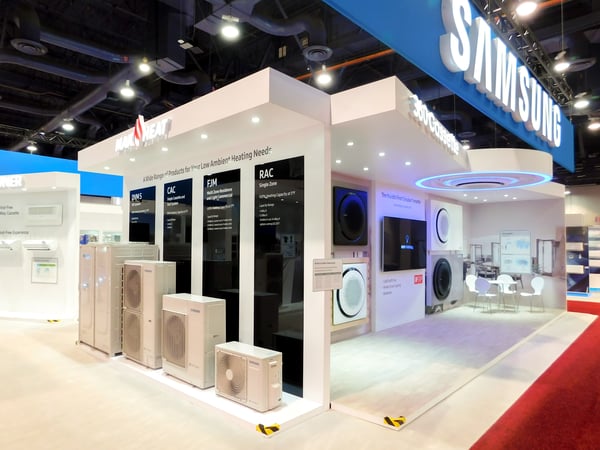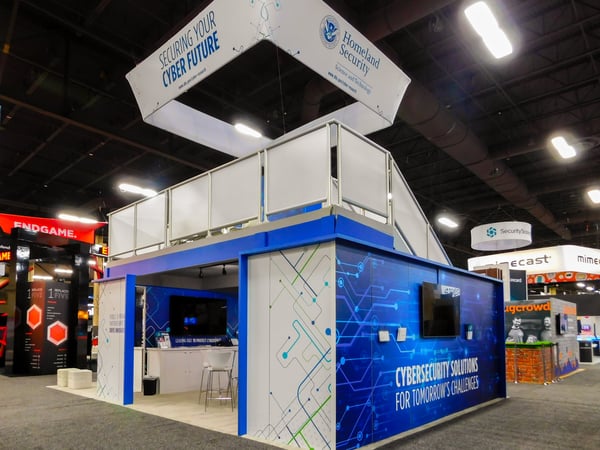Before you begin designing your booth, you'll have to decide on the type of exhibit for your show. Beyond your budget, it's important to consider the following factors:
1. Your primary objective for exhibiting – such as lead generation, a product launch, or brand awareness
2. Any functionality requirements – such as space for demos, meeting rooms, interactive activities, sampling, or storage
3. The number of sides you want open and visible to foot traffic
Now take a moment to review the types of trade show booths, the benefits and restrictions, so you can make an informed selection that supports your brand and trade show goals.
1. Inline
Inline booths (or linear), are located along an aisle with neighboring exhibitors on either side. Shows will also offer a limited number of inline booths as a corner space, allowing traffic on two sides, rather than just one.
In terms of size, the maximum depth is 10' with a height restriction of 8'. Keep in mind that this prevents you from hanging any signage from above for increased visibility. That said, there are still plenty of ways to stand out from the crowd with a creative design and floor location.
2. Peninsula
A peninsula booth exposes your booth on three sides, with the fourth side backing a linear booth or another peninsula booth.
Peninsulas allow for greater foot traffic than inline booths, but be aware of any height or element restrictions. If you prefer an open exhibit on all four sides while also utilizing as much of your booth space as possible, an island exhibit may be a better choice.
3. Island
Island booths allow for greater flexibility in the width and depth, while also open on all sides. They benefit from not being pushed up against a neighboring booth, and typically don't have any restrictions in terms of height. This allows you to utilize all that space above your booth for eye catching signage that can be seen from a distance for a greater line of sight.
Large island booths provide added square footage for additional displays, information desks, demo areas, interactive features, etc. – all while providing plenty of elbow room for visitors and staff alike.
4. Two-Story (Multi-Story)
Multi-story exhibits are exactly what they sound like – booths with two or more levels. You can use the additional levels for private meeting rooms, as a break room for your staff, additional storage, or anything else you can think of or need. Multi-story exhibits have the added benefit of higher visibility and can provide valuable additional space if your booth footprint is on the smaller side.
Many cities require prior approval by the exhibit facility, relevant local government agency, and show management due to being deemed as a "structure" for building purposes. Additionally, you'll most likely be required to provide building permits based on the application and drawings (prepared by a licensed architect or engineer).
So if you decide to go with a multi-story exhibit it's a best practice to obtain local building regulations as early as possible. This will ensure your time constraints are met and you abide by all relevant laws.

5. Portable
Portable trade show booth typically offer lower cost options, a simpler setup, and the freedom of keeping your display with you as you travel. And this could mean you won't have to rely on (or pay for) additional freight or labor services.
But no matter the types of trade show booth you're planning on using, we advise that you maintain communication with your exhibit house about your needs and wants. Doing so allows them to better service you, so that they can meet and exceed your expectations!
If you need help or would like more clarification on the various options available, feel free to get in touch with us! We’re always glad to help.







COMMENTS